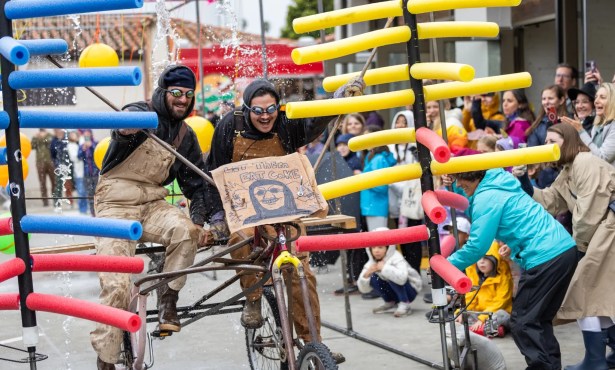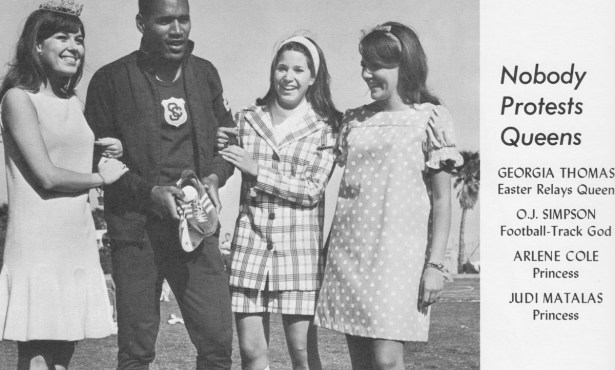‘Havana’ Good Time in Cuba
How to Travel to the Caribbean Country in an Era of Diplomatic Limbo

Getting There Legally
There are 12 different “general licenses” you can get to clear the United States’ red tape and legally visit Cuba. The four most popular are:
1) People to People: This is the easiest and most popular way to travel there. They handle all of the paperwork, hire the private charter plane, get the guides, and organize lodging, transportation, and trips. This is good for those who can afford the price tag of $2,500-$3,000, but it limits your choices. Once you book your trip, you’re committed. When you arrive in Havana, they put you on a Cuban government–approved tour-go-round. I think you miss the real Cuba, its people, and its affordability.
2) Cultural: Beyoncé, Jay-Z, and Jimmy Buffett used this legitimate paper vehicle to Cuba. Didn’t know this? Do not feel bad; even some Republican congressmembers were ignorant of this allowance when they chastised these stars for traveling there.
3) Educational: It is complicated, but you would need to be enrolled in a college program that could meet the criteria.
4) Religion: This is the easiest way of all, and you do not even have to be religious to qualify. I was able to go on the Internet and get a form that allows an individual to qualify with a signature of any religious representative. I had the pastor of my nearby Catholic Church sign mine, but you could get a rabbi, imam, reverend, or nun to do the same.
Of course, there is nothing to stop you from having anyone sign it. I am not condoning such fraud, because there are so many ways to accomplish this task legally, but U.S. Customs does not have much time to verify signatures.
Getting There Physically
Now that you know that you can go, how do you get to “Havana” good time in Cuba? The easiest way is to book a trip to Cancún, Mexico, and arrange a connection to “Habana” with Aeroméxico or Cubana Airways (aka “Cubana De Aviación”). Plan for a few layover days, and you can visit Cancún, Cozumel, Chichen Itza, and more Mayan ruins. From Los Angeles, I paid a little over $800 for all the airfare.
You’ll also need a visa, which you can get in the Cancún airport for about $25. This slip of paper is put into your passport for the duration of your stay. When you leave the country, the Cuban Customs officials (or “Aduana”) will take the paper visa out, so there is no record (no stamp) in your passport showing you have been to Cuba. This has been Cuba’s way of protecting U.S. citizens, encouraging you to return, and is another reason you can travel to Cuba with impunity.
Be Self-Sufficient
With the embargo still in place, you need to be self-sufficient. You will not be able use your credit or debit card (though that may change soon) or checking account, and your cell phone won’t work, either. So bring lots of cash, and prepare to buy prepaid phone cards for local and international calls.
Your laptop also will not be able to access the Internet. There are a limited amount of places you can send and receive email, but Habana Vieja and Centro Habana do have a number of “telepuntos,” or Internet cafes. The going rate is $6 for one hour of computer time, but keep in mind you may need 15 minutes to figure out Cuba’s old computers. The better hotels have Internet, and I found one near the Hemingway Marina, about eight miles west of Havana.
These challenges deter many American travelers. But I like the fact that there are no Starbucks, McDonald’s, KFCs, or any other U.S. chains doing business in Cuba, and it will likely remain that way until after the 2016 elections
How to Pay Less
There are two monetary systems in Cuba: the CUCs (convertible currency) for the tourist (which is 89 CUCs for a $100 bill), or the national peso, which is the local currency. I was able to get 24 nationals for one CUC. But you will need the CUCs for any tourist place, so don’t exchange them all!
Havana can be very inexpensive if you want to be frugal. Avoid the big hotels, tourist restaurants, bars, or any place Hemingway ever visited. Other restaurants may charge a buck for a beer and five bucks for a plate of food.
If you decide to convert your CUCs to nationals, you can eat like a local. I spent a nickel on a big egg sandwich and 15 cents for a big plate of food.
I was able to find good lodging at a “casa particular,” which is a family-run guest house, for $15-$35 a night. I paid $25 at one place on a second floor with an uninterrupted view of seven miles of coastline west of Havana.
What to Bring Back
You can now bring back $400 worth of Cuban goods, of which $100 can be cigars and/or alcohol, which equates to roughly four cigars or six bottles of rum.
Coming Home
At more American airports, U.S. Customs agents are using a quick and convenient computerized kiosk. Find an empty kiosk, open up your U.S. passport, and the computer scans it while taking your picture. When it gets a face match, it spits out a ticket, and you are done. Gone are the long lines of old, as well as questions like, “What countries did you go to?” and ”What are you bringing back?”
This new procedure expedites Americans’ re-entry into the country so Homeland Security can spend more time prioritizing non-U.S. citizens. At the airports that use these kiosks, this represents another potential reason you can go to Cuba without any hassle. I had my General License “paperwork,” and no one even asked for it.
Have Fun
Clearly, the time to visit Cuba is now, before the sight of U.S. business blight and increased tourism ruins the charm and increases the prices. Make sure to have a Cristal Cerveza, or try a rum-based mojito — just one more reason you can ‘Havana’ good time in Cuba. ¡Salud!



